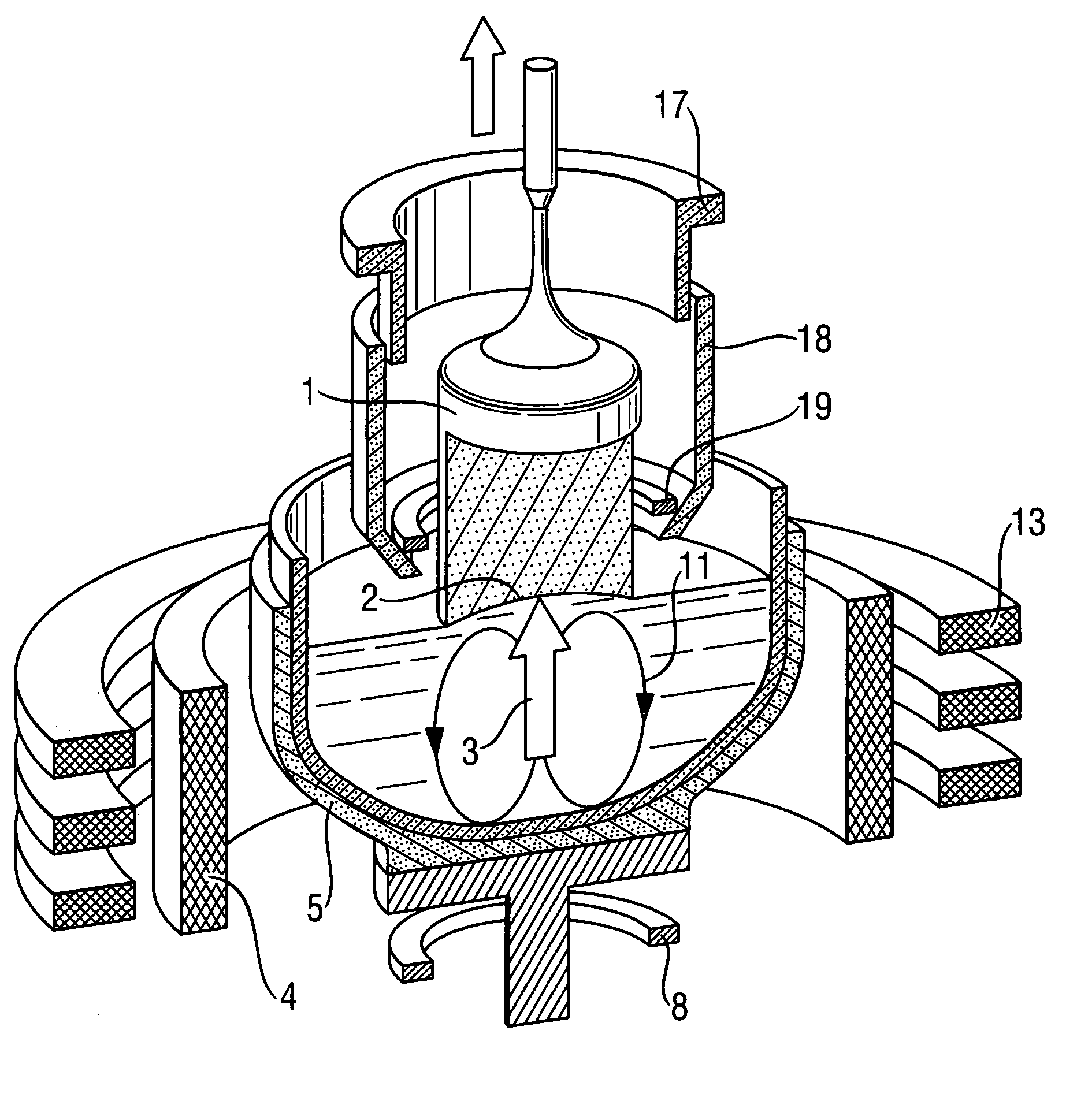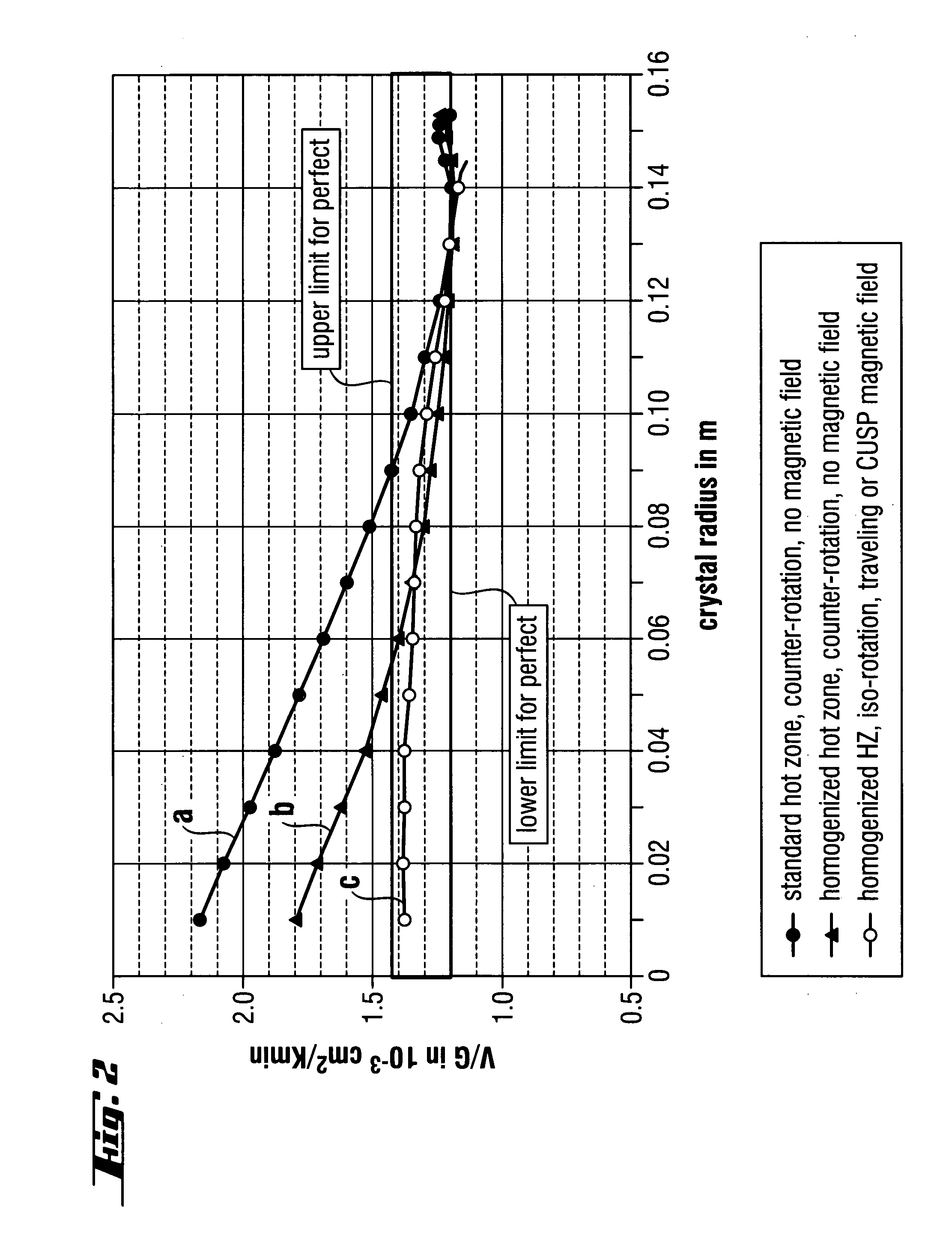Method and device for the production of a silicon single crystal, silicon single crystal, and silicon semiconductor wafers with determined defect distributions
a technology of silicon semiconductor wafers and single crystals, which is applied in the direction of crystal growth process, polycrystalline material growth, chemistry apparatus and processes, etc., can solve the problems of difficult to deliberately adjust the radial crystal properties of single crystals, the flow of heat in the melt is extremely difficult to predict, and the diameter of single crystals with 200 mm or more is significan
- Summary
- Abstract
- Description
- Claims
- Application Information
AI Technical Summary
Benefits of technology
Problems solved by technology
Method used
Image
Examples
example 2
[0066] A silicon single crystal was produced, from which semiconductor wafers with the following properties could be separated:
[0067] The semiconductor wafers were free of agglomerated self-point defects and two or more mutually separated axially symmetric regions, in which unagglomerated vacancies dominate as the defect type. The semiconductor wafers therefore have the properties of a silicon wafer corresponding to the section A in FIG. 15. The particular advantage of producing such semiconductor wafers is that the process management during the production of the single crystal is simplified, because less outlay is required on control technology. This is because there is a particularly wide process window in respect of the allowed variation of V / G. In the case of such semiconductor wafers, the oxygen precipitation occurring in the vacancy region can furthermore be adjusted accurately to the requirements of the component fabrication.
[0068] In this example, at the section position whi...
example 3
[0069] EXAMPLE 3
[0070] This example relates to semiconductor wafers with a defect distribution similar to that of the semiconductor wafers in Example 2, with the difference that unagglomerated interstitial silicon atoms dominate as the defect type in the two or more mutually separated axially symmetric regions. The process management during the production of the single crystal is simplified in the case of such semiconductor wafers as well, for the reasons mentioned above.
[0071] This distribution is illustrated in FIG. 17. The deliberate control of the heat distribution at the solidification front even makes it possible for a region 31 dominated by interstitial atoms to be produced at the center, or to be alternate with a vacancy-rich annular region 32 in a radial sequence.
[0072] The described distribution was achieved by a stronger heat supply at the center of the solidification front. To this end, the required heat flux was produced for each crystal position by means of the heating...
PUM
| Property | Measurement | Unit |
|---|---|---|
| diameter | aaaaa | aaaaa |
| electrical voltage | aaaaa | aaaaa |
| length | aaaaa | aaaaa |
Abstract
Description
Claims
Application Information
 Login to View More
Login to View More - R&D
- Intellectual Property
- Life Sciences
- Materials
- Tech Scout
- Unparalleled Data Quality
- Higher Quality Content
- 60% Fewer Hallucinations
Browse by: Latest US Patents, China's latest patents, Technical Efficacy Thesaurus, Application Domain, Technology Topic, Popular Technical Reports.
© 2025 PatSnap. All rights reserved.Legal|Privacy policy|Modern Slavery Act Transparency Statement|Sitemap|About US| Contact US: help@patsnap.com



